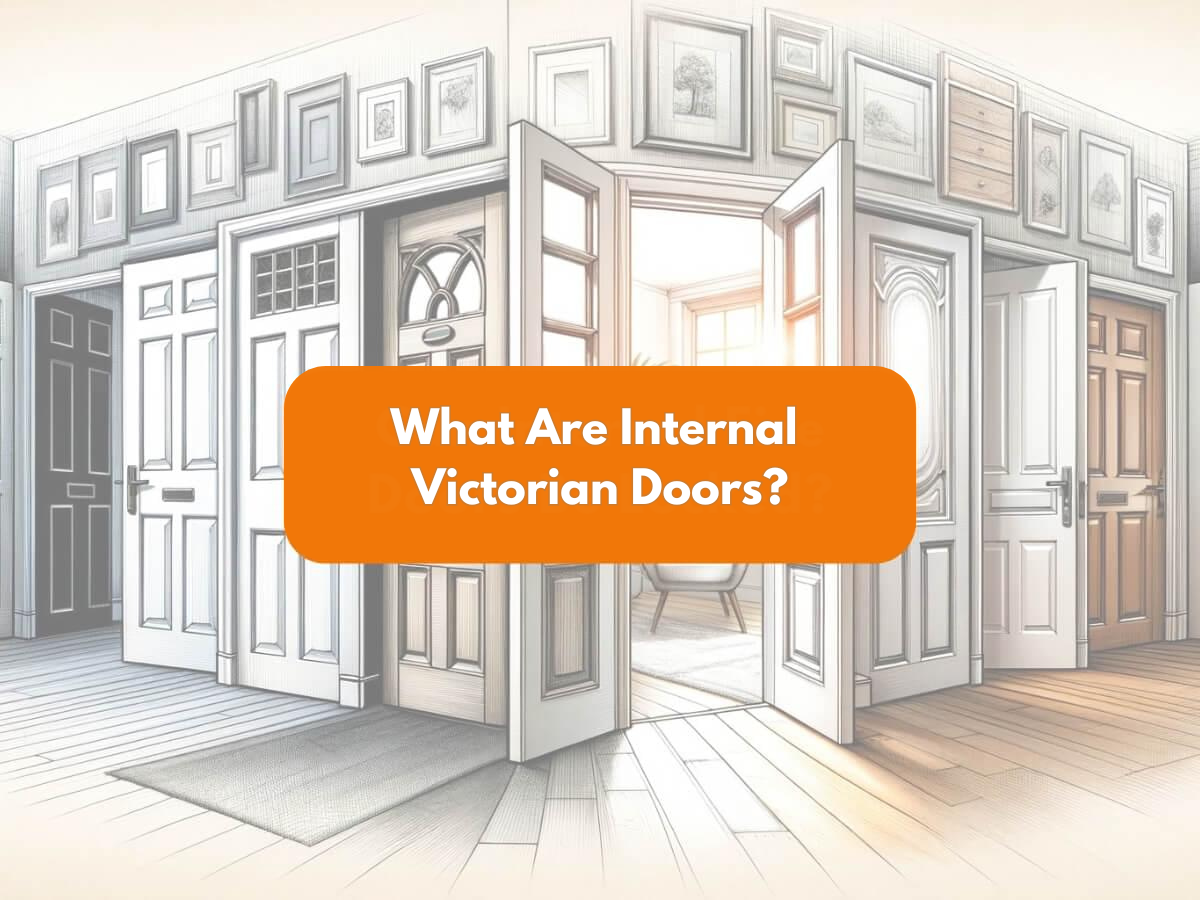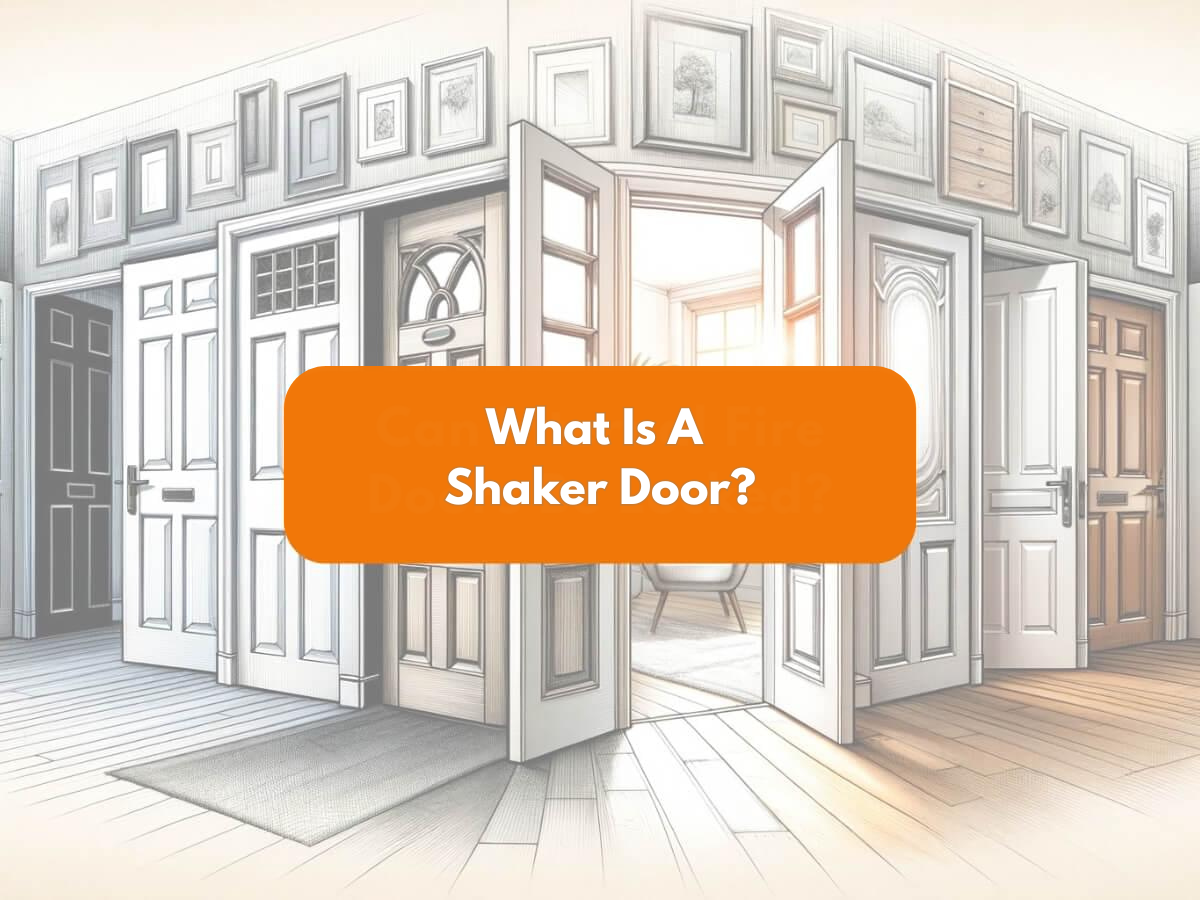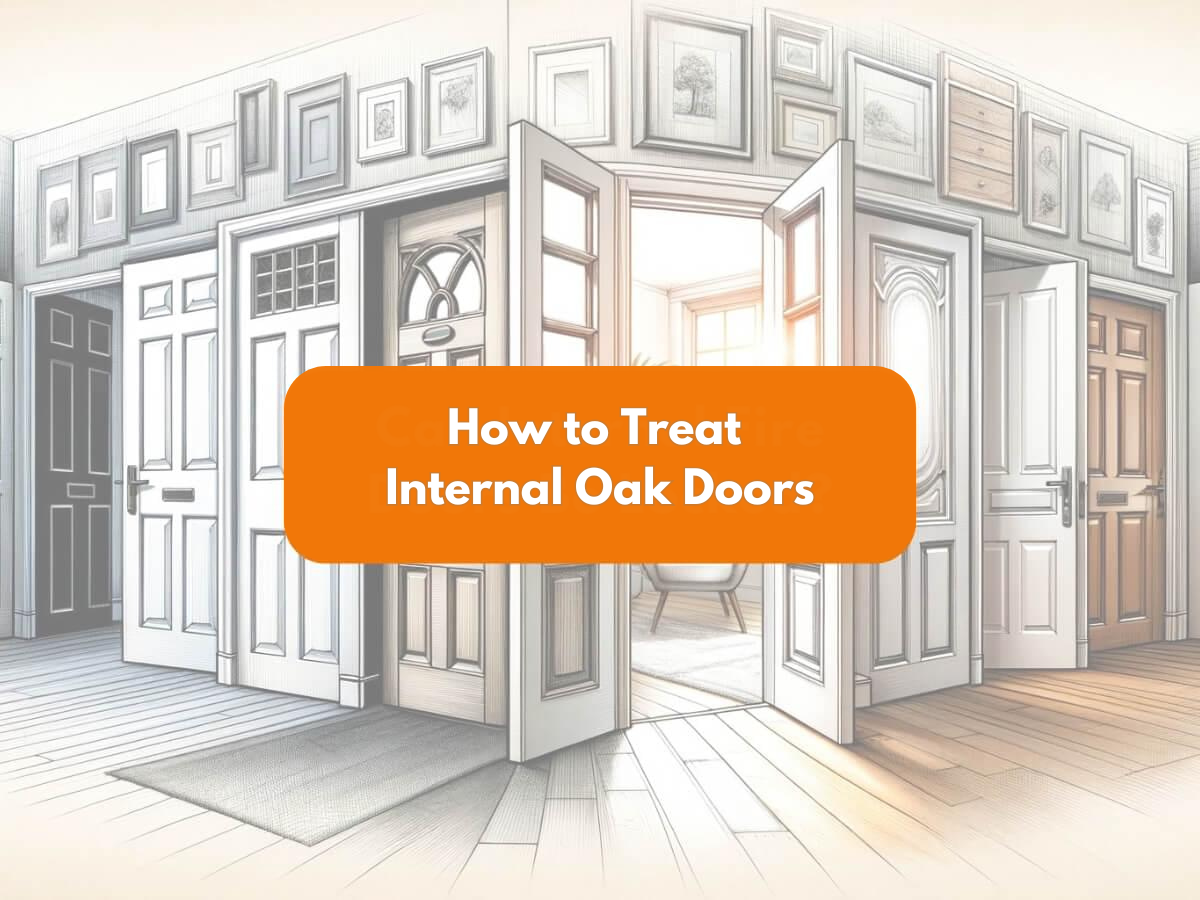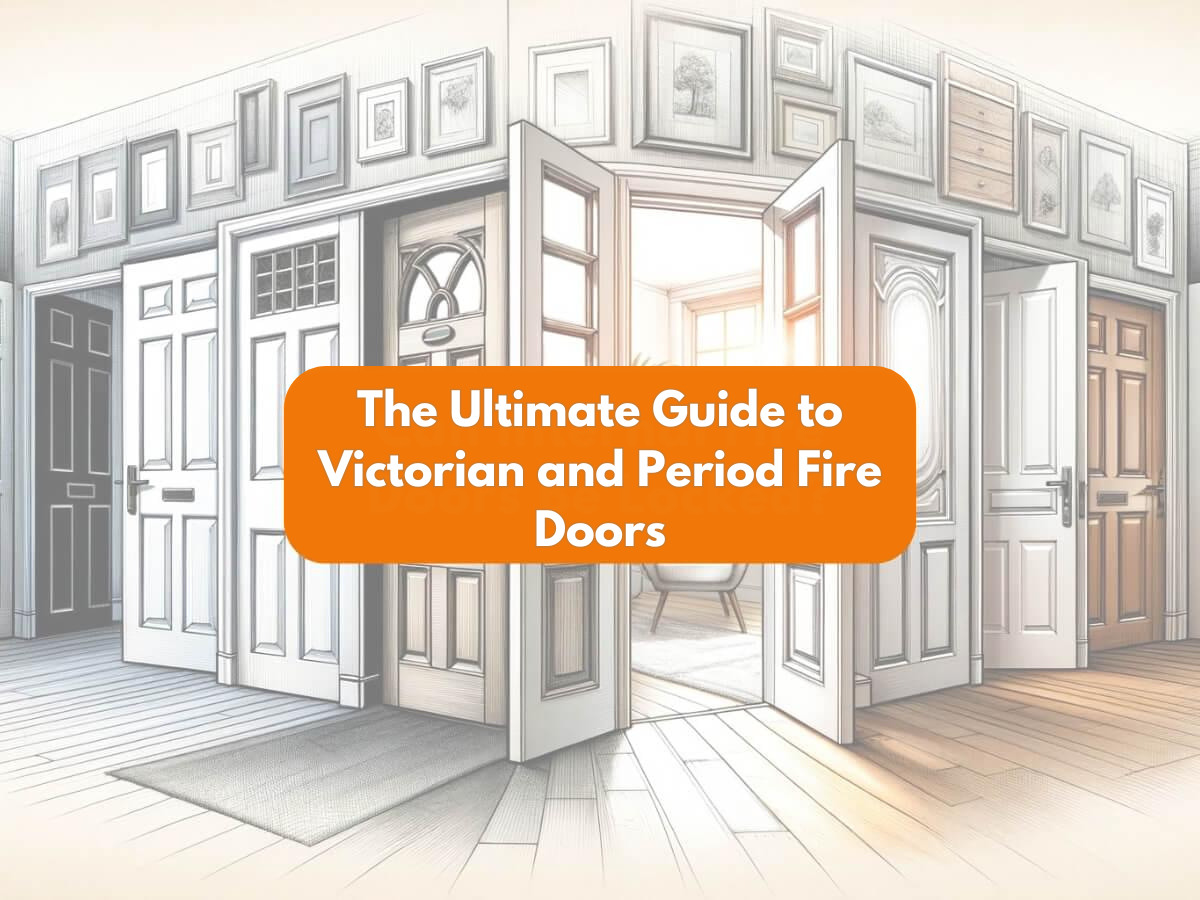Internal doors are one of the most functional and interactive parts of your home. We interact with them daily, yet they are often the last thing considered in a design project.
More than just a way to close off a room, a door is a significant architectural feature. It dictates the flow of light, manages sound, provides privacy and contributes heavily to the overall character of your space.
Whether you're in the midst of a full renovation, building an extension or simply replacing old, tired doors, this comprehensive guide will walk you through every consideration.
Backed by nearly 15 years of experience in the industry, we'll cover the technical details, the style options and the practical realities of buying internal doors in the UK, ensuring you can make your choice with confidence.
Why Should I Invest in Quality Internal Doors?
It can be tempting to choose the most basic, low-cost door. However, investing in a quality internal door provides tangible, long-term benefits that go far beyond its initial price.
Aesthetic & Architectural Impact: A well-made door acts as a key design element. The material, style and finish can anchor an interior theme, whether you're aiming for a traditional country feel, a sleek modern look or a specific period style.
Acoustic Insulation: This is one of the most significant differences. A solid core door will noticeably dampen the transmission of sound between rooms, a crucial factor for home offices, bedrooms and bathrooms.
Thermal Performance: Solid, well-fitted doors also contribute to your home's energy efficiency. They help to prevent draughts and contain heat within a room, making your spaces feel warmer and more comfortable.
Durability & Value: Quality doors are built to last. They resist warping, stand up to daily use and maintain their appearance for decades, adding tangible, long-term value to your property.
Fire Safety: In many situations, a certified fire door is a legal safety requirement. These are engineered products designed to slow the spread of fire and smoke, providing a critical window for escape.
A Guide to Internal Door Styles
Beyond its construction, the style of your door has the most visible impact.
Panel Doors: This is a timeless and versatile category. Panel doors use a framed construction to hold recessed or raised panels. The number and shape of these panels define the style.
4-Panel / 6-Panel: A classic look, often found in Victorian and Georgian properties.
2-Panel / 3-Panel: Common in Edwardian, 1930s and cottage-style homes.
Shaker Doors: A highly popular modern classic, defined by simple, clean lines and flat recessed panels. A Shaker door is a versatile choice for almost any interior.
Flush Doors: For a minimalist and contemporary look, a flush door features a single, smooth, plain surface on both sides. Its aesthetic is defined entirely by its finish, whether it's a rich walnut veneer, a clean oak veneer or a bold, painted colour.
Glazed Doors: Glazed doors are the ideal solution for dark hallways or adjoining rooms. They feature glass panels that allow natural light to move through the home, creating a brighter, more open feel.
Glass Options: All glass used in doors must be safety glass (either toughened or laminated).
Internal French Doors: This refers to a pair of glazed doors that open from the centre. They create an elegant, wide opening between spaces like living and dining rooms.
Space-Saving Doors: Bifold & Pocket For tight spaces where a traditional swinging door is impractical.
Bifold Doors: These doors are hinged in the middle and fold back on themselves, collapsing to the side. They are a popular choice for wardrobes, pantries and laundry cupboards.
Pocket Doors: This is the ultimate space-saving solution. The door slides on an overhead track and disappears into a "pocket" or cavity built into the stud wall. They are ideal for en-suites.
Choosing Your Internal Door Material and Finish
This is a practical decision that dictates the final look and the amount of work required.
First, the Finish: How much DIY are you planning?
Unfinished: The door is supplied as raw timber (e.g., unfinished oak or pine). This gives you complete control to stain, oil, wax or varnish it to your exact preference.
Primed: This is the most flexible option. The door arrives with an applied undercoat (primer). It's designed to be finished with a topcoat of paint in any colour you choose, making it perfect for customising.
Pre-Finished: This is the "ready-to-hang" solution. The door has been professionally factory-finished with a durable lacquer (on wood veneers) or a high-quality paint. This is the most convenient option and provides a consistent, high-quality, durable finish.
Second, the Material: What's the surface?
Oak: Unquestionably the most popular material. Oak doors, whether as a solid core veneer or solid wood, offer a beautiful, visible grain and a sense of warmth.
Walnut: A premium, darker wood veneer. Walnut provides a rich, sophisticated and luxurious look, often used on flush doors in high-end modern interiors.
Pine: A traditional and more budget-friendly solid wood. It has a lighter colour and a more rustic, knotty character.
A Critical Guide to Internal Fire Doors
This is a vital aspect of home safety and it's governed by law.
What is a Fire Door?
A fire door is a complete, engineered system. It's not just the door leaf itself, but a certified set including the frame, hinges and intumescent strips, all designed and tested to resist fire and smoke for a specified time.
What is FD30?
In UK homes, the standard is FD30. This means the door set, when correctly installed, provides 30 minutes of fire protection.
How to Identify a Fire Door
A certified fire door will have a label or coloured plug (often on the top edge) stating its FD30 rating and its certification. They are also visibly thicker and heavier than standard doors.
Installation is key. A fire door is only effective if installed correctly with all its certified components. This includes fitting the intumescent strips (which expand with heat to seal the gap) and using the correct fire-rated hinges. We strongly recommend using a professional to fit any fire door.
Your Internal Door Pre-Purchase Checklist
Use this checklist to ensure you have all the information you need before you buy.
1. Accurate Measurements
This is the most common and costly mistake.
How to Measure For an Internal Door
If you are replacing an existing door, measure the height, width and thickness of the door leaf itself. If you only have the opening, measure the inside of the door frame (the lining) at three different points for both height and width. Use the smallest of these three measurements.
2. Frames (Linings)
The door lining (or casing) is the timber surround fixed into the wall that the door is hung from. If your existing linings are in good, square condition, a new door can be hung within them. If they are damaged or you're creating a new opening, you will need to purchase new linings.
3. Hardware (Door Furniture)
Hardware is almost always sold separately. For each door, you will typically need:
Hinges: For any solid core or solid wood door, we always recommend 3 hinges to properly support the weight and prevent the door from dropping over time.
Handles: These come as a lever on rose (a modern, circular/square fixing) or lever on backplate (a traditional, long plate).
Latch/Lock: A tubular latch is the standard mechanism for a door that just needs to open and close. For a bathroom, you'll need a privacy lock (often a thumbturn).
4. Installation Plan
Be realistic about the job. Fitting an internal door is a skilled carpentry task.
For most people, hiring a professional joiner is the best route. They will ensure a perfect fit, especially in older homes with non-square frames. For fire doors, it is essential.
2025 Internal Door Trends: What's New?
Natural Finishes & Textures
The desire for natural materials continues. This translates to oak doors with clear matte lacquers or oils that celebrate the grain, rather than heavy, glossy stains.
The Painted Door as a Feature
While white is timeless, doors are increasingly being used as a feature. Painting a door in a deep, bold colour, such as forest green, deep blue, or even black, can create a dramatic and sophisticated focal point.
Buying Online vs. Visiting a Showroom
Buying Online: The primary benefits are convenience and a vast selection. You can browse thousands of products and compare prices from home. With 1,000s of trusted reviews, you can feel confident in your online purchase with Internal Doors.
Visiting a Showroom: A showroom allows you to experience the products firsthand. You can feel the satisfying weight of a solid core door, compare the finishes on different oak veneers and test the mechanisms of handles.
At Internal Doors, we bridge this gap. Our website offers the full range, while our Hinckley showroom provides the vital hands-on experience. We encourage you to book an appointment with an expert. Our customers often praise our team members, who are known for their deep product knowledge and ability to give clear, helpful advice on everything from complex pocket door systems to the right hinges for your project.
Maintenance and Aftercare Tips for Internal Doors
A quality door will last for decades with minimal care.
Cleaning: Use a soft, damp cloth with a mild detergent. Avoid abrasive cleaners or excess water, especially on wood veneers.
Hardware: Check that hinge and handle screws are snug once a year. A drop of lubricant on squeaky hinges is all that's required.
Sticking: Wood can "move" with seasonal changes in humidity. If a door begins to stick, a carpenter can easily plane a tiny amount from the edge and re-seal the bare wood.
Your Next Steps
Choosing an internal door is a long-term decision that impacts the daily look, feel and sound of your home. By first considering the practical needs, you can then narrow down your search to the styles and finishes that match your vision.
With many years of experience, a team of genuine experts and a commitment to quality, sustainable products, we're here to help you find the perfect door.















